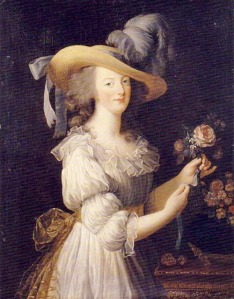
When travelling from Florence to Rome, tourists would have to cross the Campagna, which was as one tourist described, a “wretched, barren, sandy country all the way to the very gates of Rome.” Traveling from Florence to Rome was uneventful and dreary, but Rome was worth the hardships. Charles Cadogan said “it is impossible for a person to dash through it, as it is for them to fly. I stayed a full fortnight there, and only had time to get just such a general idea of the numberless wonders both of modern and ancient times, as to determine me to spend 2 or 3 months there before my return to England.” There were so many things to experience, including purchasing paintings and antiquities, hire antiquarians, and seek artistic advice. Rome offered Classical and Baroque sculpture, architecture, and painting. The ancient ruins were also an important site to see in Rome, and many paintings incorporated them. Despite the Italian people, the crowdedness, and dirtiness of the streets, Rome was still an important place to go.

Claire’s journal:
We had the most wonderful meal today. Italian food is a true novelty for us Grand Tourists. We dined on these meat-filled pillows, made of dough and covered with tomato sauce. The waiter called them ‘ravioli.’ Before this heavenly course, we nibbled on bologna sausages, figs and melons. Scrumptous.
Roger got hammered on wine. We’ve learned that wine is the most popular drink among the Grand Tourists due to its easy transport. Roger transported the wine all the way down his throat. He acted like that Caravaggio we saw in the restaurant.
Roger’s journal:
Man, that meal was awesome, and the wine was even better. The wine was so smooth that I had several glasses. Claire complained that I acted like this artist named Caravaggio, who was already dining at the restaurant when we arrived. He got mad at a waiter, jumped up, and yelled, “Do you know who I am?” I didn’t jump up but Claire kept telling me to lower my voice.
 Sistine Chapel
Sistine Chapel
The Sistine Chapel was built between 1475 and 1483 for Pope Sixtus IV. Michelangelo painted the ceiling and the altar piece, but there were many more, like Botticelli, Ghirlandaio, Pintricchio, and Signorelli which contributed to the artwork on the inside as well. Michelangelo wrote a poem about painting the ceiling, which was very dark because he really did not want to do it. One scene which is very popular is the “Creation of Adam” which depicts God charging Adam with a spark of life. The gesture is not completed, which brings in the psychology of the viewer to complete it.
Claire’s journal:
It’s very moving and emotional in the sense that someone could spend hours and four years paint something like this.
Roger’s journal:
This is definitely the climax of this Grand Tour. So monumental; it inspires me to create art! Can you image someone from our world doing something like this? I’d be the first! Nobody would know what to make of it; they would not understand. I’ve been all the way from England to Rome, and now I know why this trip is so important!

Museo Pio-Clementino
The day they go to see the plaster casts, the woman decides to wear a big dress, the fashion of the time. Of course, she is clumsy and trips, bumping into one of the famous casts. This one accident creates a domino effect eventually knocking over a whole row resulting in the dismembered statues we know of today.
The Museo Pio-Clementino was founded by Pope Clement in 1771 as part of the Vatican museums. It houses Greek and Roman sculptures and the Sistine Chapel. There are many different galleries in this museum, including the Greek Cross Gallery, which houses the porphyri sarcophagi of Constance and Saint Helen, daughter and mother of Constantine the Great; the Sala Rotonda, which is shaped like a miniature pantheon and has ancient mosaics on the floors as well as ancient statues; the Gallery of the Statues which holds various important statues, including Sleeping Ariadne and the bust of Menander; the Gallery of the Busts which has many ancient busts; the Gallery of the Masks, which house ancient theater masks; and the Sala delle Muse, which houses the statue group of Apollo and the nine muses as well as statues by important ancient Greek sculptors.
St. Peter’s Cathedral
St. Peter’s Cathedral was originally built in the fourth century by Constantine, but was rebuilt by Pope Julius II. Bramante started the work, then Michelangelo took over, and was finally completed by Maderno and Bernini. The basilica’s dome is the largest in the world. Inside are works including the Papal altar and the Throne of St. Peter which was created by Bernini as well as the Monument to the Stuarts by Canova. There are two fountains and an obelisk which is said to be where St. Peter was crucified.
Roger’s journal:
I am in awe of this structure. It’s not made out of metal and covered in glass, like at home. It’s all stone and has this arcade that extends out like arms around the piazza. Inside, I’ve become a fan of Bernini’s Baldachino. The columns are all twisty and what not. I really appreciate the detail.
Claire’s journal:
I’m a little overwhelmed by the exterior but the inside is wonderful with all the gold in the Cathedra Petri. Even the floors are like pictures. I feel bad about walking on them. After touring the inside of St. Peter’s, Roger rediscovered his fondness for Italian wine. The last time I saw him he was racing across the piazza, yelling out Caravaggio’s name.















